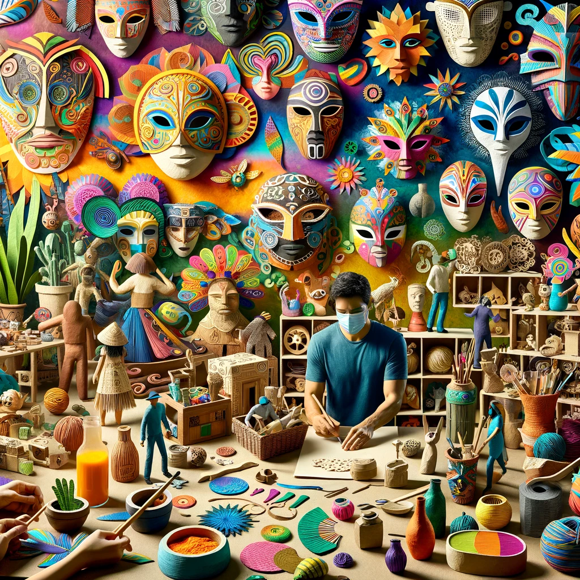Papermache, a centuries-old craft, embodies creativity, sustainability, and cultural significance. From intricate sculptures to vibrant masks, this versatile medium has enchanted artists and hobbyists alike. However, the art of papermache is not without its controversies, raising questions about cultural appropriation, environmental impact, and artistic legitimacy. This article delves into the multifaceted world of papermache, exploring its history, contemporary relevance, and the debates that surround it.
A Brief History of Papermache
Papermache, derived from the French term “papier-mâché,” meaning “chewed paper,” has roots in ancient China, where it was used to create helmets, trays, and other functional items. The technique spread to Persia and Japan, where it evolved into an art form, producing elaborate festival masks and dolls. By the 17th century, papermache had reached Europe, becoming popular for crafting decorative objects and furniture.
The Craftsmanship and Creativity
At its core, papermache is simple: paper strips are soaked in a paste of water and flour or glue, then molded over a form and left to dry. Despite its humble materials, the possibilities are endless. Artists can shape it into delicate sculptures, lifelike masks, or whimsical creatures, using paints, fabrics, and other embellishments to bring their creations to life. This accessibility has made papermache a beloved medium for both professionals and amateurs.
Sustainability and Environmental Impact
One of papermache’s most appealing aspects is its eco-friendliness. Utilizing recycled paper and non-toxic adhesives, the craft aligns with sustainable practices. However, not all papermache products are created equal. Some commercially produced items use harmful chemicals and excessive packaging, contradicting the craft’s green potential. Advocates for sustainable art encourage using locally sourced, recycled materials to minimize environmental impact.
Cultural Appropriation: Respecting Traditions
Papermache’s global journey has seen it adopted and adapted by various cultures, each adding unique elements to the craft. However, this rich cultural tapestry raises concerns about cultural appropriation. When Western artists and companies reproduce traditional designs without acknowledging or compensating the original creators, it can perpetuate a cycle of exploitation. Respecting the origins of these designs and collaborating with traditional artisans are essential steps toward ethical crafting.
Artistic Legitimacy: Craft vs. Art
The debate over whether papermache is considered “high art” or merely a craft persists. Some view it as a lesser form of artistic expression due to its accessible nature and inexpensive materials. However, many contemporary artists challenge this notion, creating sophisticated works that command high prices in galleries and exhibitions. Papermache, like any medium, offers a spectrum of artistic potential, from simple school projects to masterpieces of fine art.
The Future of Papermache
As we move toward a more environmentally conscious and culturally aware society, papermache’s relevance continues to grow. Educational programs integrate it into curriculums to teach sustainability and creativity. Artists experiment with new techniques, blending traditional methods with modern innovations. Moreover, the dialogue around cultural appropriation prompts a more respectful and inclusive approach to crafting.
Conclusion
Papermache is more than just paper and paste; it is a reflection of human creativity, resourcefulness, and cultural exchange. While it faces challenges related to sustainability, cultural appropriation, and artistic legitimacy, these discussions drive the evolution of the craft. By embracing ethical practices and pushing artistic boundaries, the art of papermache can continue to inspire and captivate future generations.
In a world where fast fashion and disposable goods dominate, papermache stands as a testament to the beauty of slow, thoughtful creation. It reminds us that art is not defined by its materials but by the passion and intention behind it.
